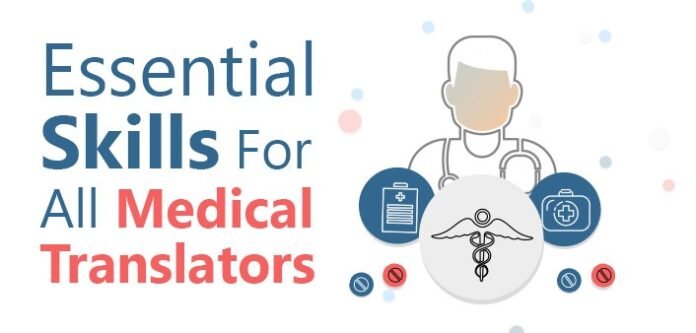Having reliable medical translations is incredibly important since people from all different backgrounds and cultures seek medical treatment in countries where they may not speak the same language. This includes the translation of medical records, which can be a complicated process requiring expertise in medicine and language translation.
In this article, we’ll be delving into the unique challenges of translating medical information during pandemics and why accurate medical content translation is so critical now and in the future.
What Makes Translating Medical Content So Tricky?
Many obstacles make it challenging to translate medical content. To further complicate matters, each language has its medical terms. Furthermore, a lot of the components of medical words are derived from archaic languages like Latin and Greek. The complexities of meaning and context in medical information might make for a problematic translation.
On the other hand, mistakes in medical translation can have devastating effects, making it a high-stakes field to work in. Hence, the need for medical content translation services becomes more prominent.
Medical Translation Errors And Their Repercussions:
Medical translation mistakes can lead to patient harm due to incorrect diagnosis, inadequate treatment, legal trouble, and a damaged professional reputation. Also, poor communication due to more inaccurate translations might cause significant damage.
Moreover, mistranslations on labels can cause patients to take the wrong medication, administer the wrong dose, or experience unwanted side effects, for instance. Likewise, delaying or preventing proper medical treatment owing to a misdiagnosis might result in severe injury or death. Therefore, translation services in healthcare have to be very careful in this regard.
Ensuring Quality Content to Avoid Mistakes
Quality assurance mechanisms can be implemented to reduce the likelihood of translation mistakes in medical information. The first step is ensuring the translation team has the appropriate medical and linguistic competence. Second, to avoid any mistakes, the translation process needs to go through numerous rounds of review, including proofreading and editing. Last, translation apps and tools can facilitate the interpreting process and guarantee uniformity between renditions.
Disastrous Outcomes Brought On By Translation Mistakes
Willie Ramirez, a baseball player, had a brain hemorrhage in 1980 and was taken to a hospital in Florida. Unfortunately, his medical records were mistranslated. Ramirez’s family told the physicians that he was “intoxicado,” which means “poisoned” in Spanish. However, the doctors mistook this phrase for “intoxicated” and incorrectly diagnosed Ramirez with substance abuse. The improper medication was given, and the patient suffered lifelong brain damage. Hence, agencies need to take assistance from regulatory translation services whenever possible.
Regulation of Translation Services
Regulatory Translation can avoid medical translation errors. Only if these services establish quality standards and vetting translators for competence. The authorities can incentivize providers to prioritize the accuracy and quality of regulation and establish consequences for those who do not meet these criteria. Guidelines for using translation software and tools can also be provided by legislation, improving translation quality control.
Enhancing Scientific Translation
The following are some of the most effective methods for enhancing scientific translation services:
- Ensure the team doing the translating is full of scientists who know their way around words.
- When implementing a rigorous quality assurance procedure, you need to review and revise it multiple times.
- Making use of specialized translation software and tools to streamline the translation process can guarantee accuracy.
- Keep translators up-to-date on scientific developments and translation practices by providing them with training and professional development opportunities.
- Facilitating open lines of communication between translators and domain experts is crucial in producing accurate and understandable translations.
- Use dictionaries and style manuals to ensure all references and writings are uniform.
- Improve future translations by considering user comments on already published scientific content.
Pandemics And The Significance of Medical Content Translation
The COVID-19 epidemic has shown how critical it is to have access to quick and accurate medical translation services. The rapid global spread of the epidemic necessitated that healthcare workers rapidly relay critical information to patients in various languages. Inaccurate translations or delays in translation may increase infection rates and mortality.
In addition, as the world becomes more interconnected, it is increasingly important for healthcare personnel to communicate effectively with patients from a wide range of cultural and linguistic backgrounds.
Hence, these services will remain crucial to meeting the needs of culturally and linguistically diverse patient populations and delivering high-quality care to all.
Conclusion
Translating medical content is an arduous task that requires expertise not only in medicine but also in translation. This is why healthcare language service providers are essential, especially during pandemics, to ensure that people from different linguistic backgrounds receive the necessary information and care. Their role is crucial in bridging the language gap and providing accurate medical translations to cater to the diverse needs of patients.

